
ALBRECHT Dürer Holzschnitt mit dem Titel Melancholia I von 1514 Stockfotografie Alamy
Albrecht Dürer (German, Nuremberg 1471-1528 Nuremberg) 1603-4. Di Alberto Durero Pittore, e Geometra. . .della Simmetria dei Corpi Humani, Libri Quattro Nuouamente Tradotti dalla Lingua Latina nella Italiana. Albrecht Dürer (German, Nuremberg 1471-1528 Nuremberg) 1591.
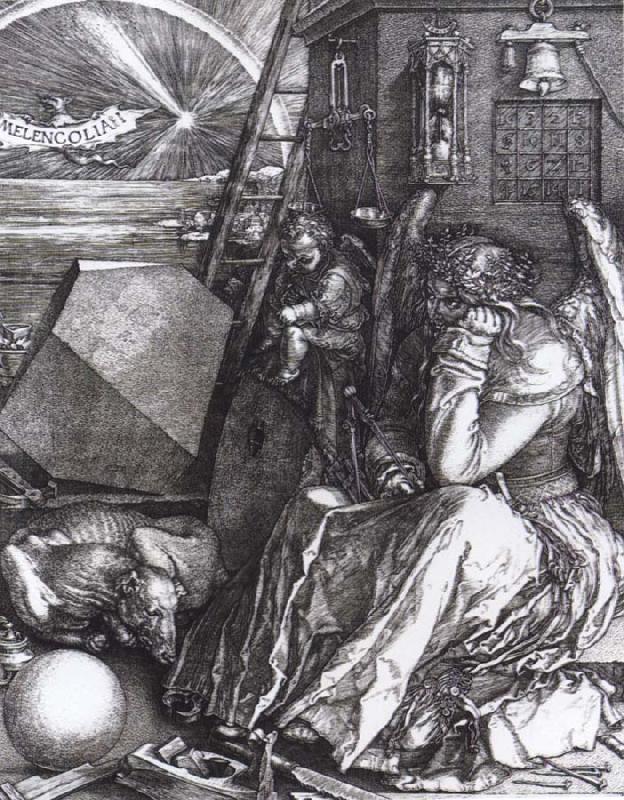
Melancholia Albrecht Durer Open picture USA Oil Painting Reproductions
Melencolia I Artist Albrecht Dürer Year 1514 Medium Engraving Location Staatliche Kunsthalle (State Art Gallery) in Karlsruhe, Germany Dimensions 9.4 in × 7.4 in 24 cm × 18.8 cm Famous Paintings by Albrecht Dürer Young Hare Rhinoceros Adam and Eve Praying Hands Knight, Death and the Devil Apocalypse Self-Portrait of Albrecht Dürer Melencolia I Adoration

Albrecht Dürer Die Melancholie Kunstsammlungen Nürnberg
Dimensions. 24 cm × 18.8 cm (9.4 in × 7.4 in) Melencolia I is a large 1514 engraving by the German Renaissance artist Albrecht Dürer. Its central subject is an enigmatic and gloomy winged female figure thought to be a personification of melancholia - melancholy. Holding her head in her hand, she stares past the busy scene in front of her.
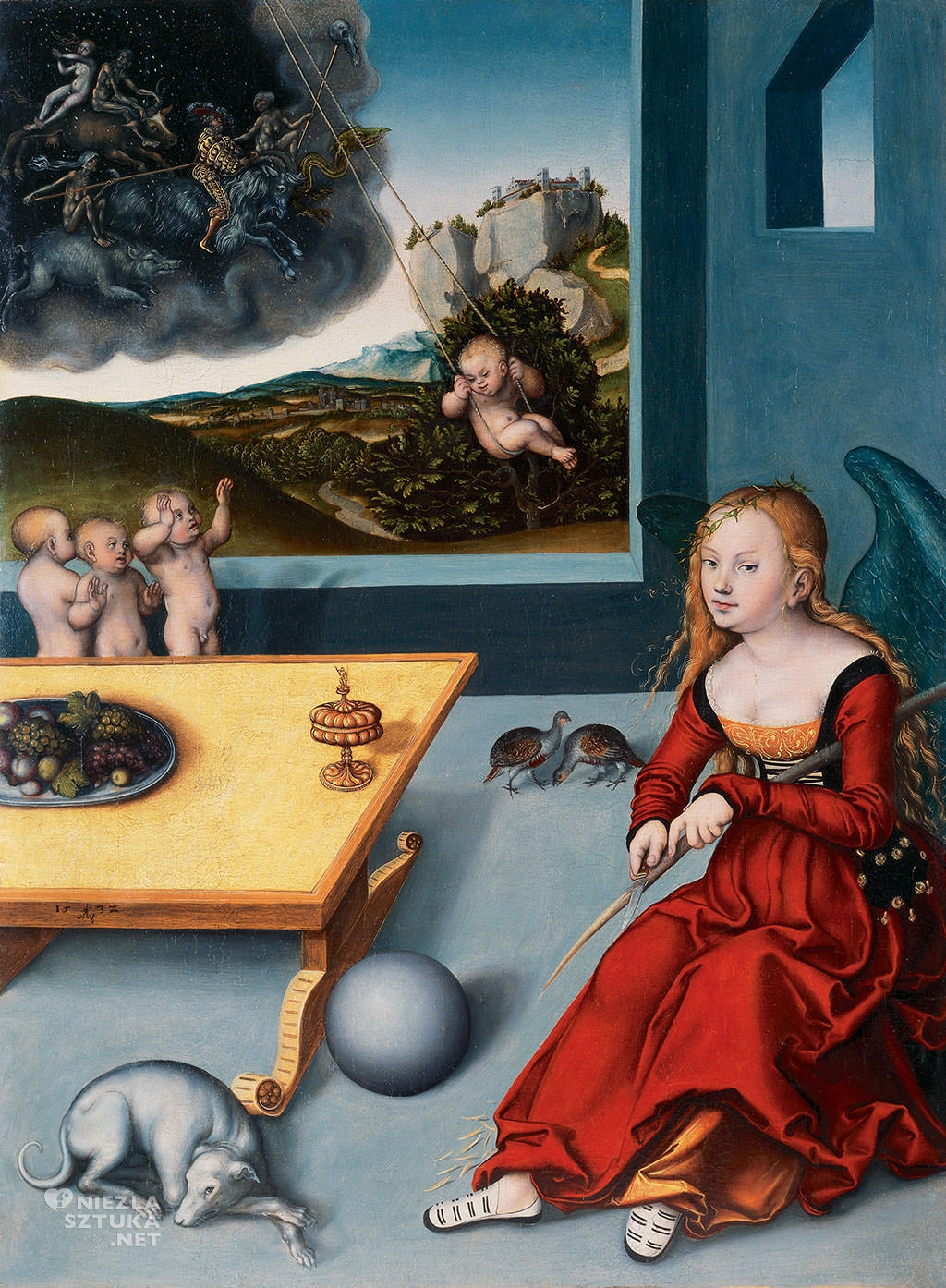
Albrecht Dürer „Melancholia I” » Niezła sztuka
The last name Durer comes from the German word tur, which means door. Durer didn't leave us any written explanations about his intended meaning in Melencolia I. But Erwin Panofsky, one of the most important art historians of the 20th century, suggested that this work might be Durer's psychological self-portrait.
.jpg)
Melencolia I JungleKey.fr Wiki
Fri 18 Mar 2011 06.52 EDT. 48. Albrecht Dürer's Melencolia I has cut its black lines deep into the modern imagination. It shows a winged being who sits in apparent dejection, surrounded by unused.
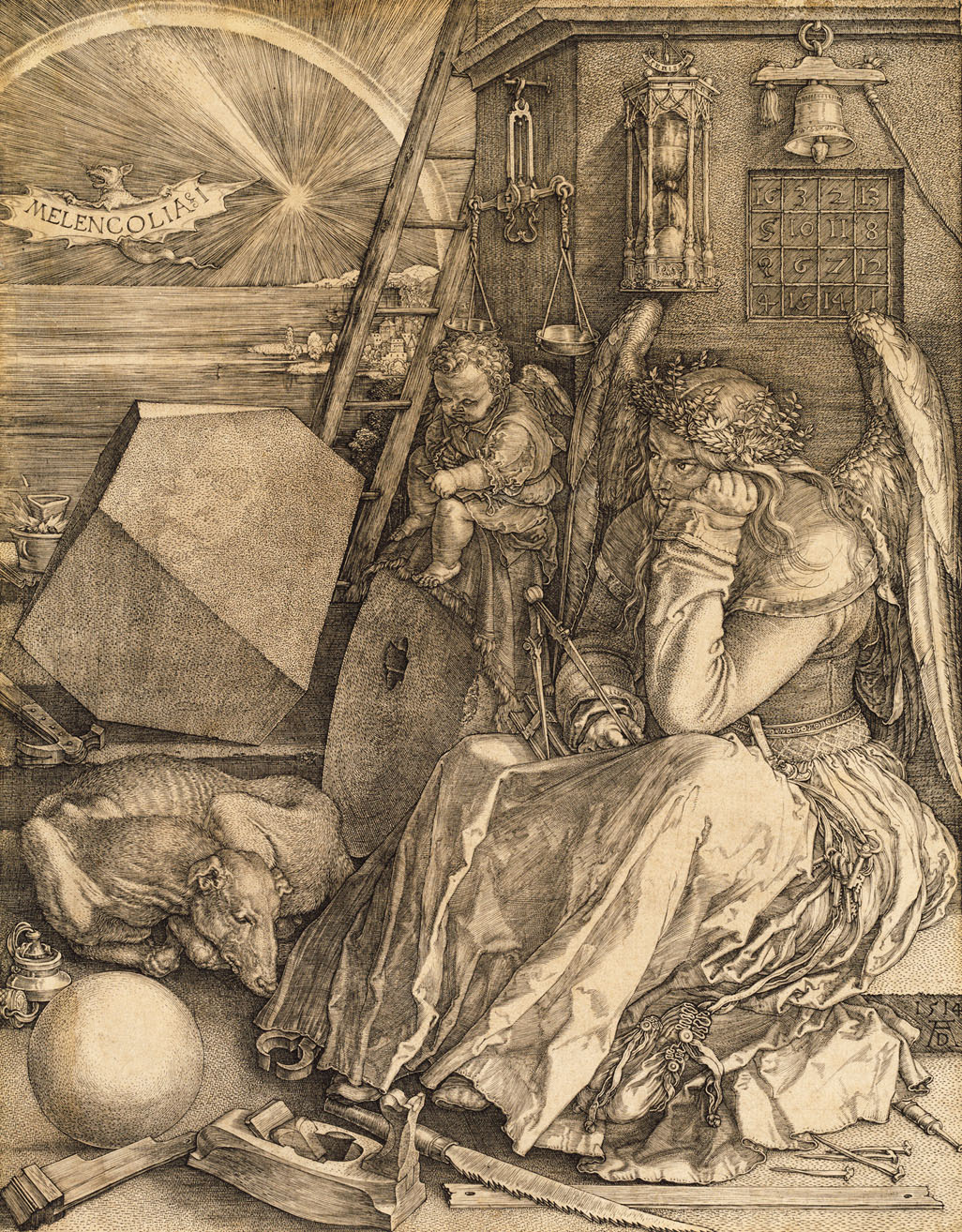
Melancholia I Albrecht Durer
Albrecht Dürer, Melencolia I, 1514, engraving, 24 x 18.5 cm (The Metropolitan Museum of Art) Albrecht Dürer is the rare artist who truly deserves to be called genius. Genius, however, is tricky business. Dürer's intellect, introspection, and unrelenting perfectionism may have driven him to a state of melancholia—what is now known as.
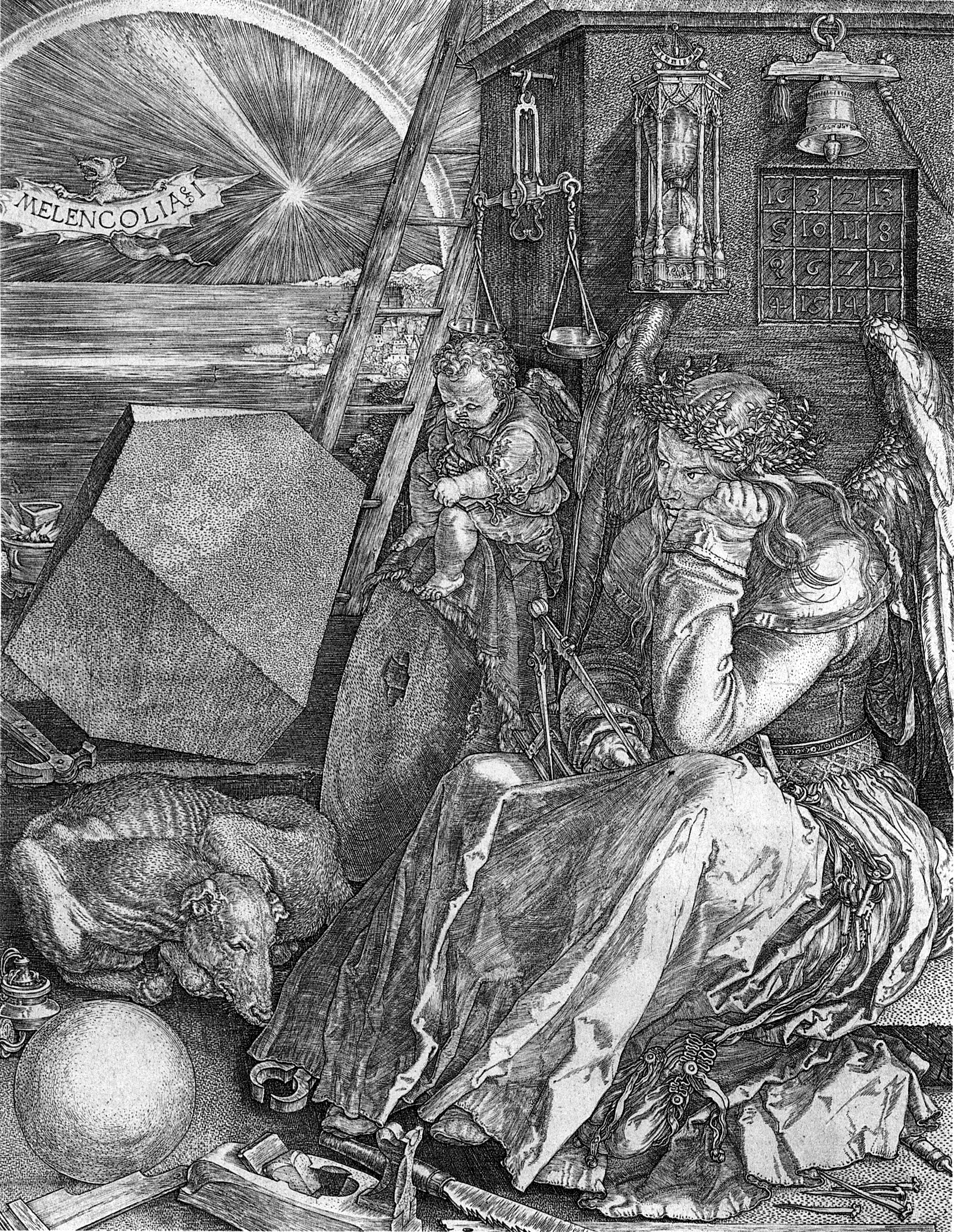
Melencolia I, 1514 Albrecht Durer
Dürer's Melencolia I is one of three large prints of 1513 and 1514 known as his Meisterstiche (master engravings). The other two are Knight, Death, and the Devil (43.106.2) and Saint Jerome in His Study (19.73.68). The three are in no way a series, but they do correspond to the three kinds of virtue in medieval scholasticism--moral.
Albrecht Dürer, Melencolia I, 1514, © The Trustees of The British Museum Download Scientific
Media in category "Melencolia I by Albrecht Dürer" The following 46 files are in this category, out of 46 total. Albrecht Dürer, Melencolia I (Die Melancholie), 1514.png 4,063 × 5,173; 51.38 MB
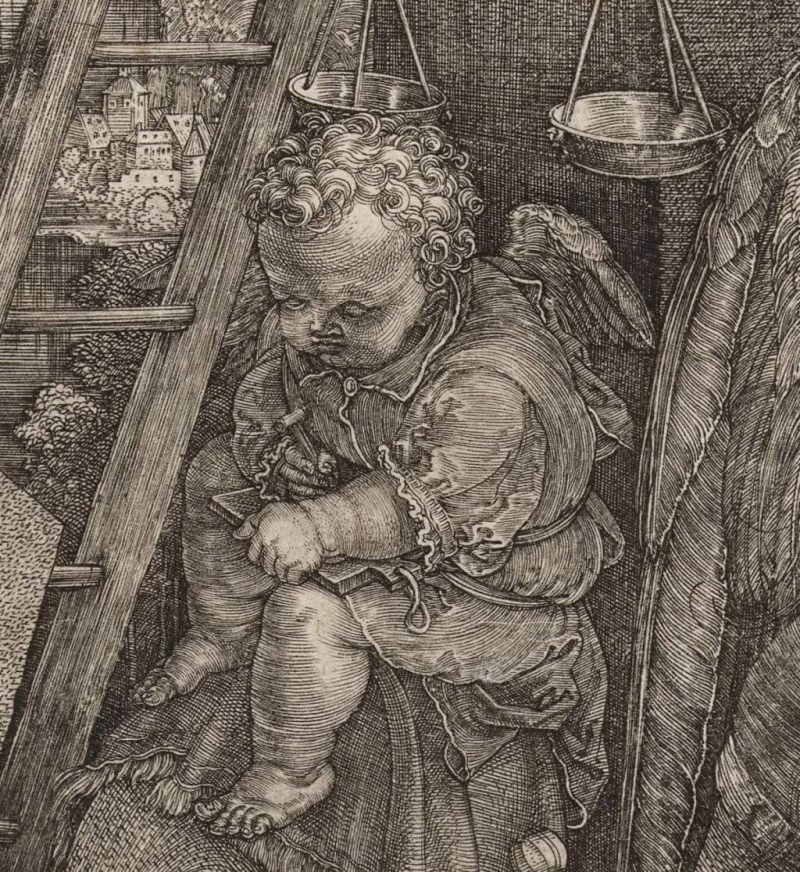
Albrecht Dürer „Melancholia I” » Niezła sztuka
Share. Albrecht Dürer, Melencolia I, 1514, Staatsgalerie Stuttgart, Stuttgart, Germany. Detail. A renowned print, famously titled "Melencolia I" and crafted by Albrecht Dürer, stands as one of the most captivating works in art history. Within this unassuming monochromatic masterpiece, a plethora of symbols and significances lie encoded.

Melencolia I; Albrecht Dürer Custom Art Prints The British Museum
Museum of Fine Arts, BudapestBudapest, Hungary. In 1513-1514, Dürer made three "master engravings ", similar in format, among them Melencolia I, whose enigmatic symbols and multifarious meanings have made it one of the most often discussed works in art history. The title refers to the theory of temperaments, which was of ancient origin but.
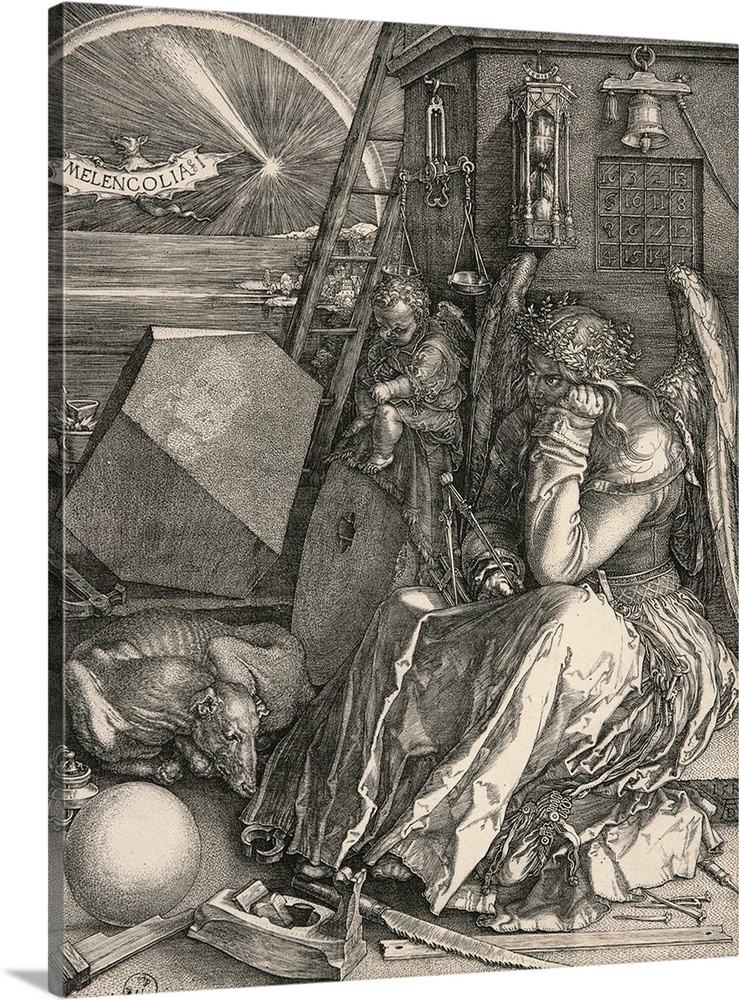
Melancholia I, by Albrecht Durer, 1514. Uffizi Gallery, Florence, Italy Wall Art, Canvas Prints
Download a digital image of this work. Albrecht Dürer (artist), German, 1471 - 1528, Melencolia I, 1514, engraving on laid paper, sheet (trimmed to plate mark): 24.2 x 18.8 cm (9 1/2 x 7 3/8 in.), 1943.3.3522. Dürer spent a year in the Netherlands (1520-1521), where he was moved by the recognition accorded him by artists and dignitaries.

Albrecht Dürer, "Melancholia I" 1514, intaglio engraving. Symbolizes the Muse of Melancholy, at
Albrecht Dürer (German, Nuremberg 1471-1528 Nuremberg) Engraving; second state. sheet: 9 9/16 x 7 7/16 in. (24.3 x 18.9 cm) trimmed to plate line. Classification: Fletcher Fund, 1919. Accession Number: Vendor: Junius Spencer Morgan (American) New York. The Metropolitan Museum of Art.

Albrecht Dürer, Melancholia I 1514, Minneapolis Institute of Art, Minnesota Albrecht durer
In his book about Albrecht Durer, John Berger classes Melencolia I and the other two parts of the Apocolypse as constituting "the great high-point in Durer's graphic work".Similarly, art historian Erwin Panofsky claimed that is was the supreme self-portrait of Durer's working life - presumably due to the imagery it conveys. According to David Ritz Finkelstein, "The engravings Melencolia I of.
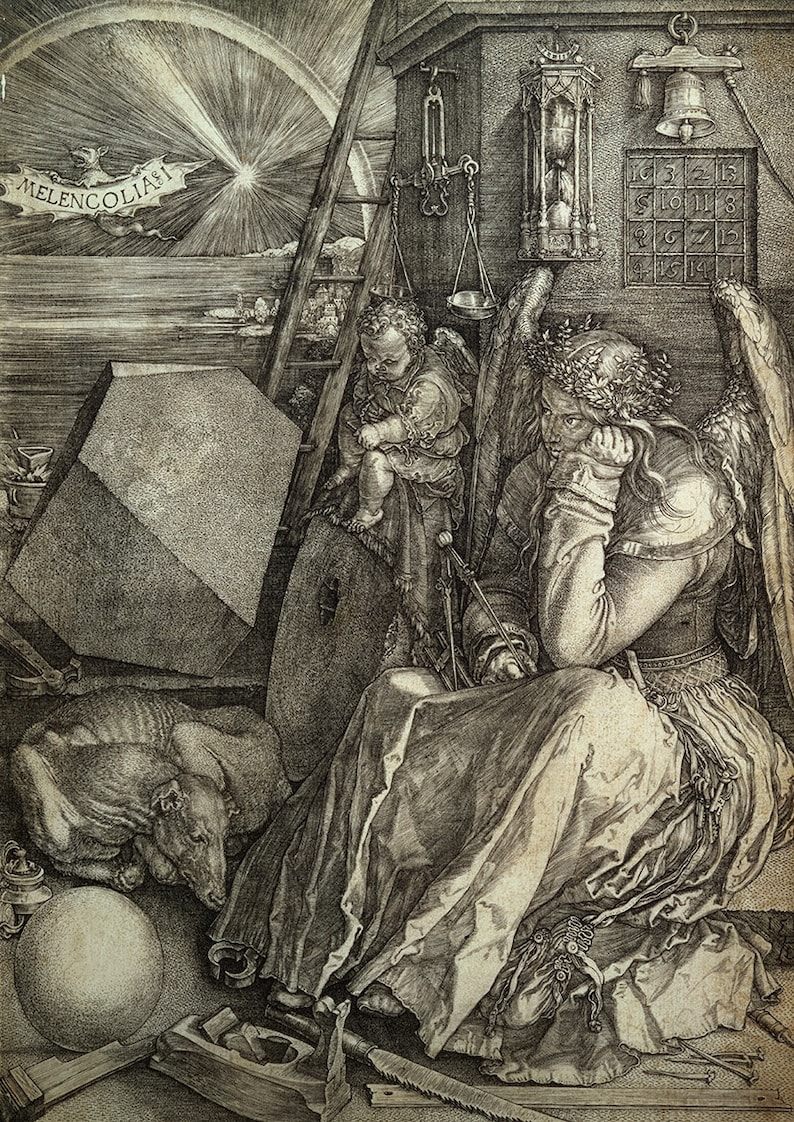
Albrecht Durer Melancholia melancolia. Fine Art Etsy
Albrecht Dürer 1514. The Metropolitan Museum of Art New York City, United States. Download this artwork (provided by The Metropolitan Museum of Art). Learn more about this artwork. Details. Title: Melencolia I; Creator: Albrecht Dürer; Date Created: 1514; Physical Dimensions: Sheet: 9 1/2 × 7 5/16 in. (24.1 × 18.5 cm)
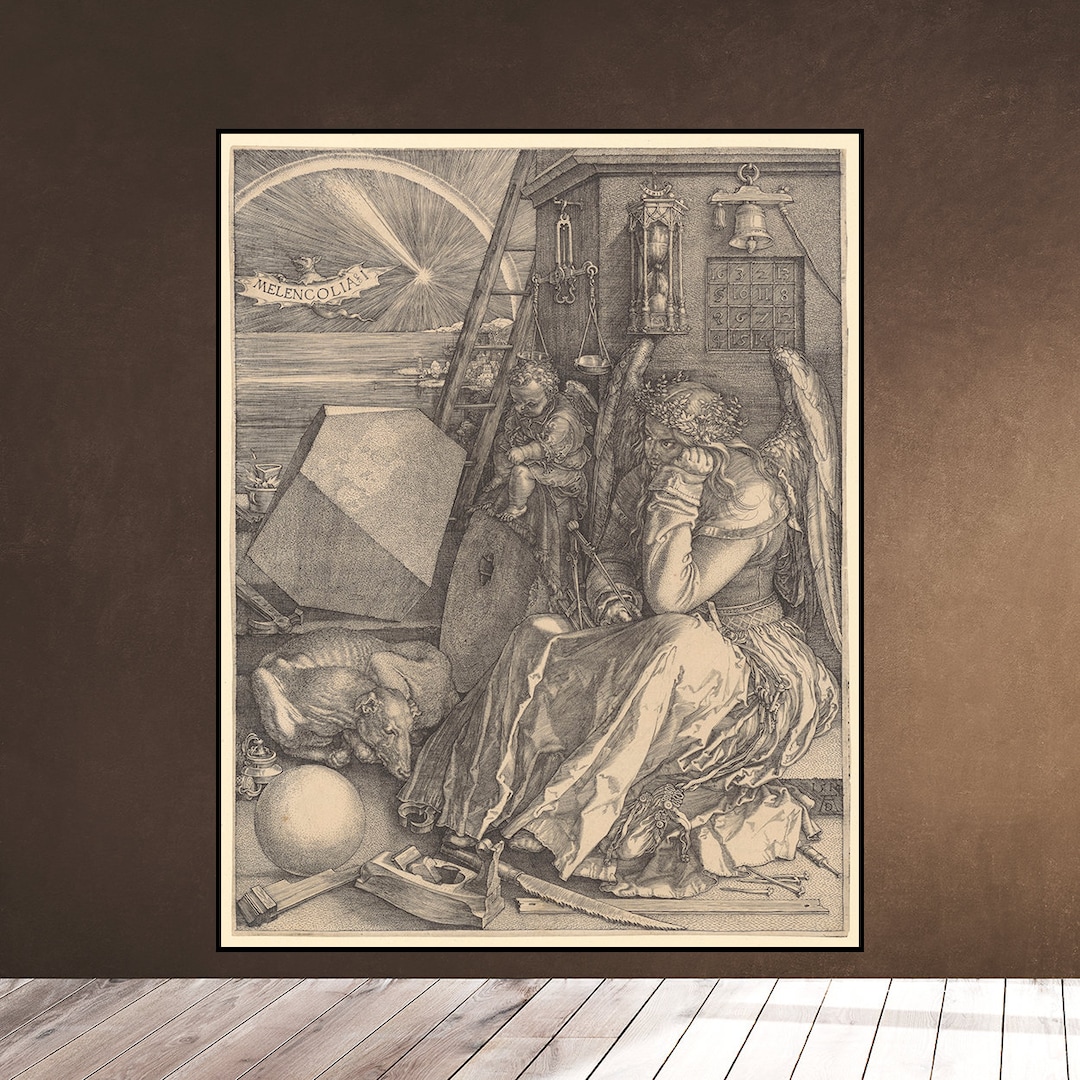
Albrecht Durer Melencolia I Melancholia Engraving 1514 Etsy
Albrecht Dürer (/ ˈ dj ʊər ər /; German: [ˈʔalbʁɛçt ˈdyːʁɐ]; 21 May 1471 - 6 April 1528), sometimes spelled in English as Durer, was a German painter, printmaker, and theorist of the German Renaissance.Born in Nuremberg, Dürer established his reputation and influence across Europe in his twenties due to his high-quality woodcut prints.He was in contact with the major Italian.

Global Gallery Albrecht Durer Melancholia Stretched Canvas Artwork Posters & Prints
Albrecht Dürer, Melencolia I ,1514, engraving, 24 x 18.5 cm (The Metropolitan Museum of Art) Albrecht Dürer is the rare artist who truly deserves to be called genius. Genius, however, is tricky business. Dürer's intellect, introspection, and unrelenting perfectionism may have driven him to a state of melancholia—what is now known as.